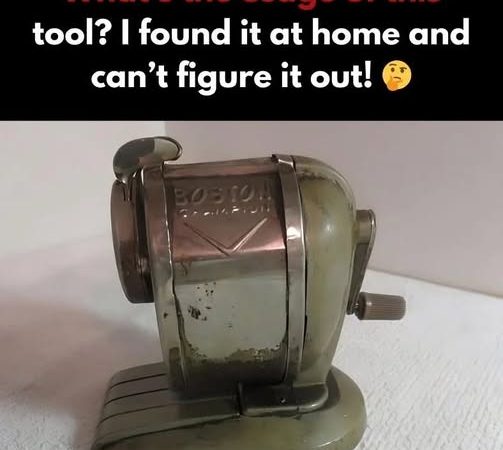Vintage pencil sharpeners have played a crucial role in both educational settings and personal use for over a century. These simple devices transformed a mundane task into an essential part of our daily routines. By examining their history, usage, and enduring influence, we can gain insight into our relationship with tools and technology.
A Brief History of Pencil Sharpeners
The pencil sharpener dates back to the early 19th century, but it wasn’t until the late 1800s that these tools became widespread. The first sharpeners were basic handheld devices that required manual effort. However, it was the Boston Pencil Sharpener Company, founded in 1899, that revolutionized the industry by introducing the first wall-mounted sharpeners. Their Boston KS model, with its multiple hole sizes, quickly became a staple in classrooms across the United States.
By the 1910s, sharpeners had evolved further with the introduction of more advanced designs, including the first hand-cranked models. These sharpeners improved efficiency, allowing users to achieve a finer point with minimal waste. As schools across the country adopted them, manual sharpeners became an iconic part of the classroom, often mounted on the walls for easy access and communal use.
Usage in Everyday Life
For generations of students, using a pencil sharpener was a daily ritual. The comforting sound of a pencil being sharpened and the sight of fresh shavings created a satisfying experience. In many classrooms, children would line up to sharpen their pencils, turning the task into a social activity that fostered connections among peers.
The manual pencil sharpener required a hands-on approach. Students would adjust the opening, insert their pencils, and crank the handle until the pencil reached the perfect sharpness. This tactile process created a level of engagement that modern electric sharpeners often lack. The act of sharpening became a brief moment of focus amidst the distractions of a busy classroom, adding a sense of mindfulness to the task.
The Rise of Electric Sharpeners
By the late 20th century, electric pencil sharpeners began to change the landscape. Offering speed and convenience, they quickly gained popularity in schools and offices. However, they lacked the charm and nostalgia associated with their manual counterparts. The noise and mechanical whirring of electric sharpeners often disrupted classroom environments, eroding the communal experience of sharpening pencils together.
Despite the rise of electric models, vintage manual sharpeners remained beloved by many. Collectors and enthusiasts began to appreciate their craftsmanship, simplicity, and historical significance. Brands like Boston, X-ACTO, and others became synonymous with quality, producing sharpeners that were not only functional but also timeless in design
The Legacy of Vintage Pencil Sharpeners
Today, vintage pencil sharpeners are cherished as artifacts from a simpler time. They evoke fond memories of school days and the tactile pleasure of manually sharpening a pencil. Collectors admire these tools for their durability, elegant design, and the stories they tell about the evolution of education and technology.
The legacy of vintage sharpeners extends beyond nostalgia. They remind us of the value of craftsmanship and the joy of engaging in simple, deliberate tasks. In an age dominated by digital devices and instant gratification, these sharpeners offer a glimpse into a past where tools were built to last, and the experience of using them was just as meaningful as the results.
Conclusion: A Cherished Piece of History
Vintage pencil sharpeners are more than just functional tools; they are symbols of our educational journeys and milestones in the evolution of everyday objects. As we continue to embrace digital technology, the enduring charm of these vintage sharpeners serves as a reminder of the tactile, communal experiences that shaped our formative years. Their legacy will continue to inspire future generations to appreciate the art of writing—and the simple pleasure of sharpening a pencil.

